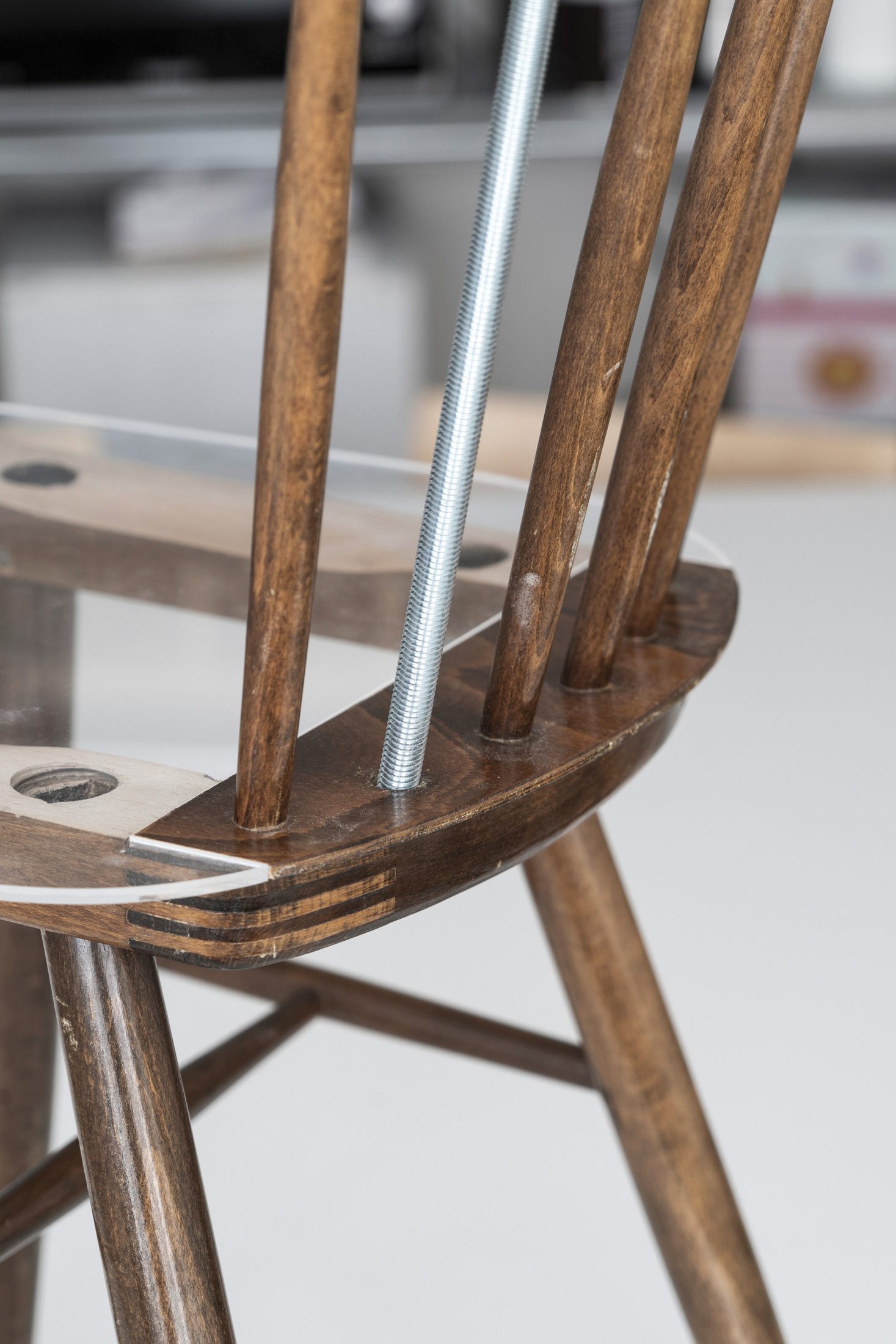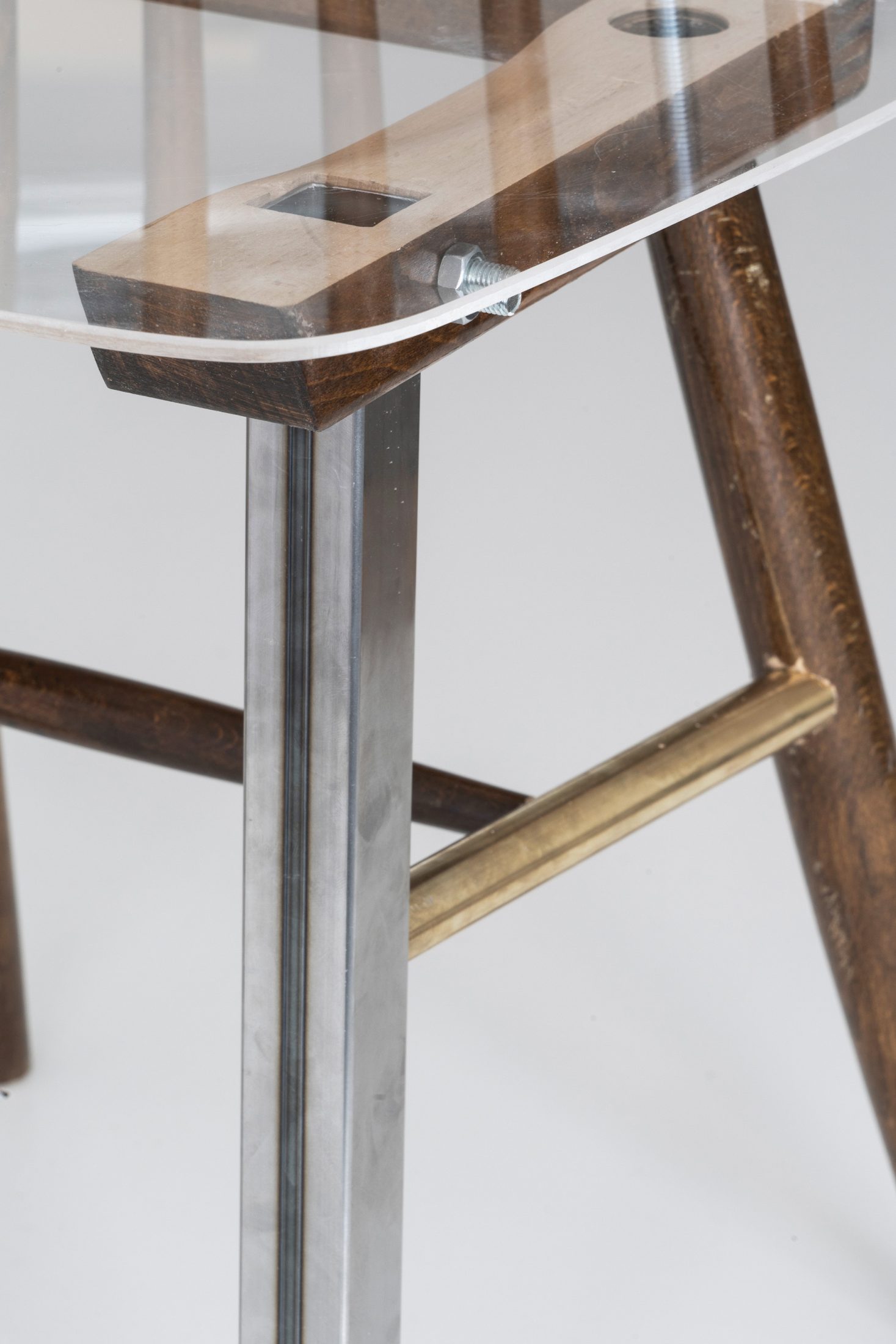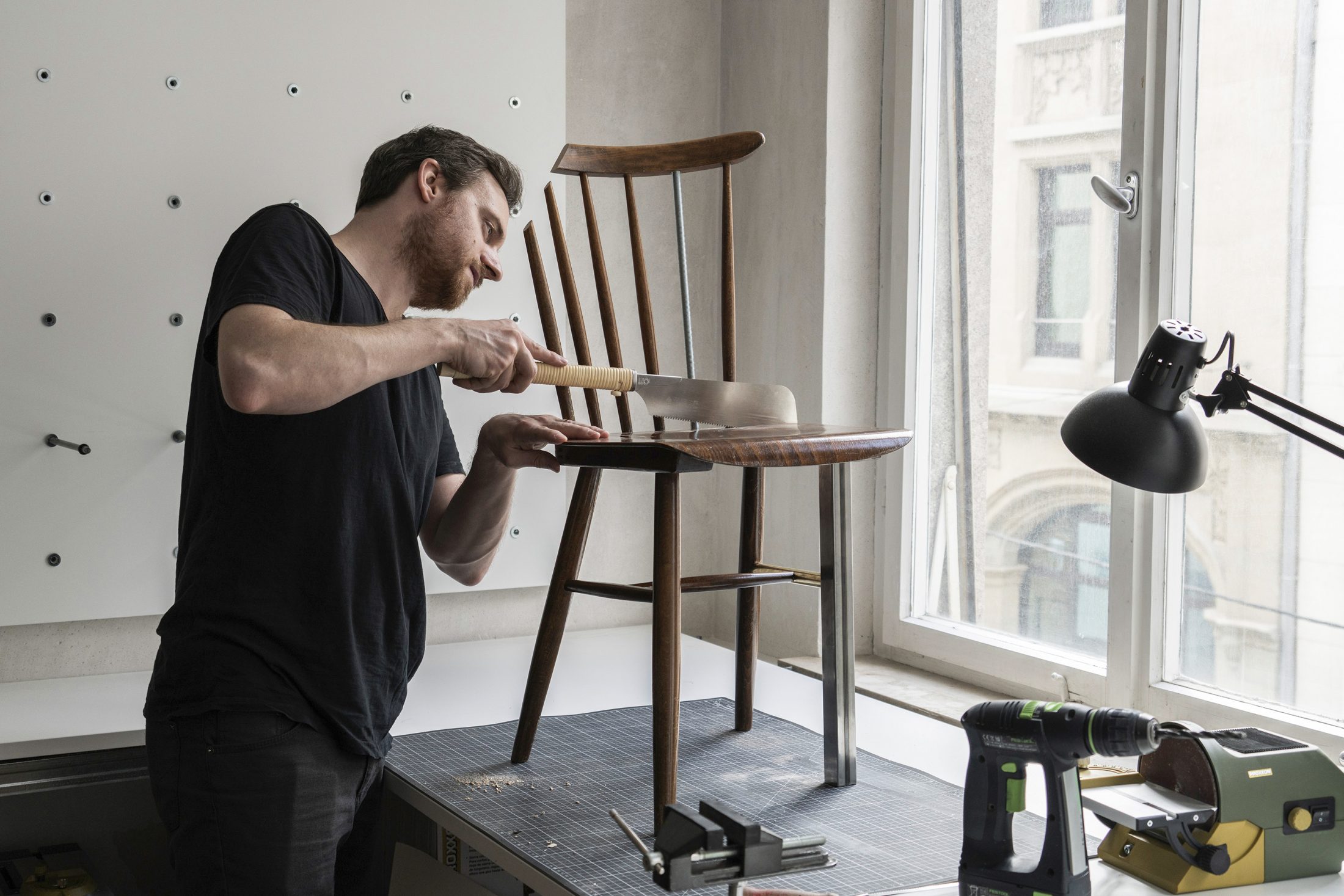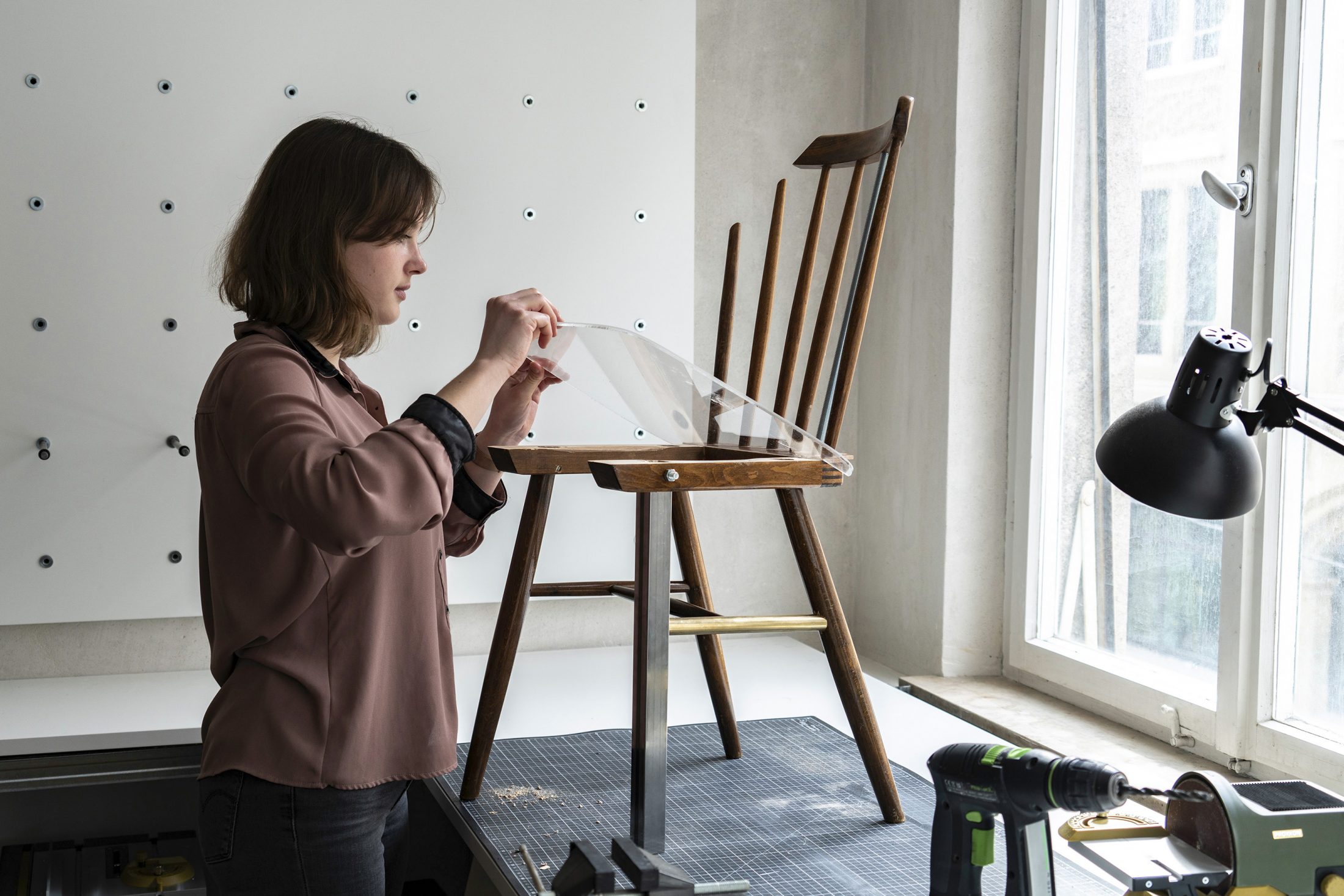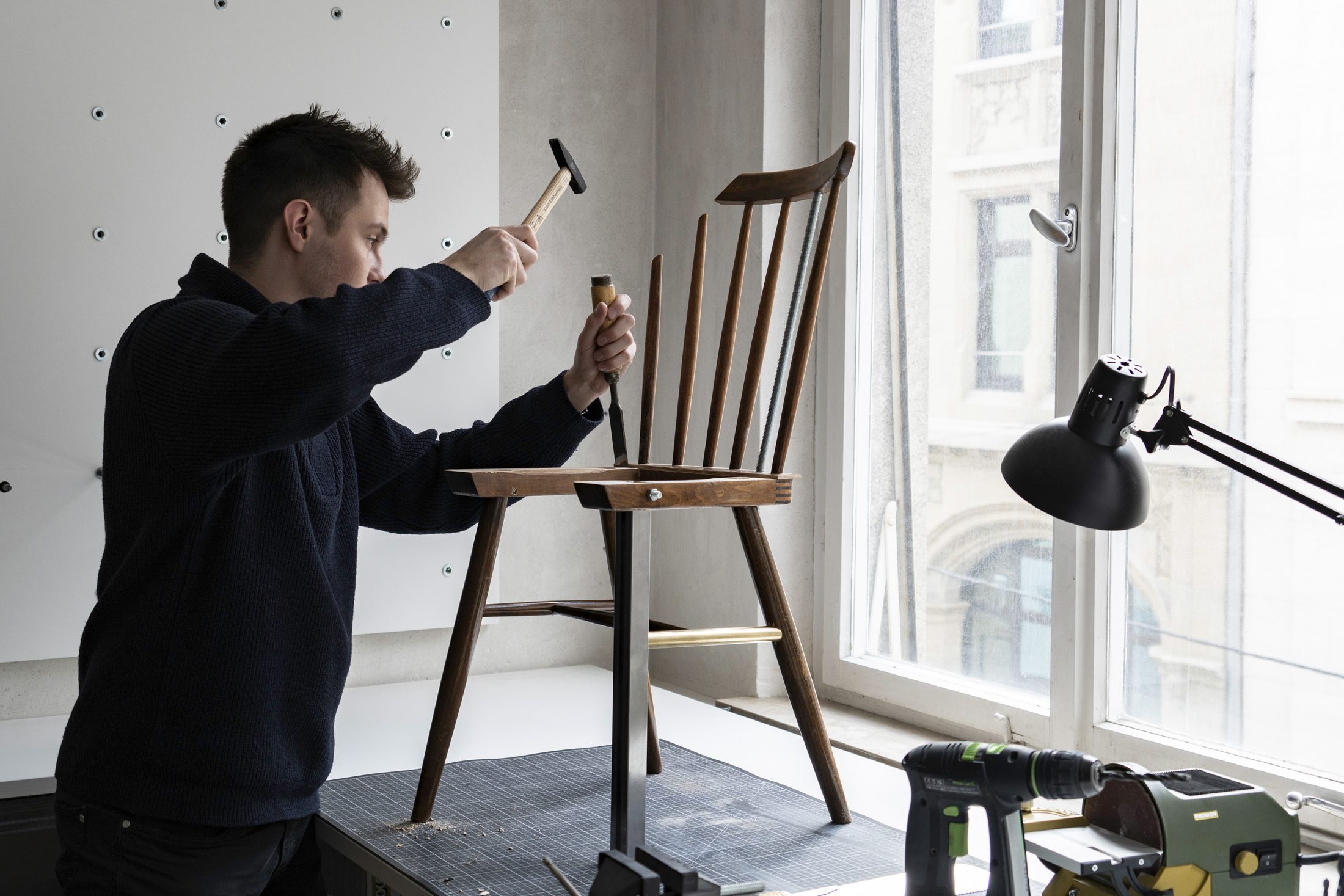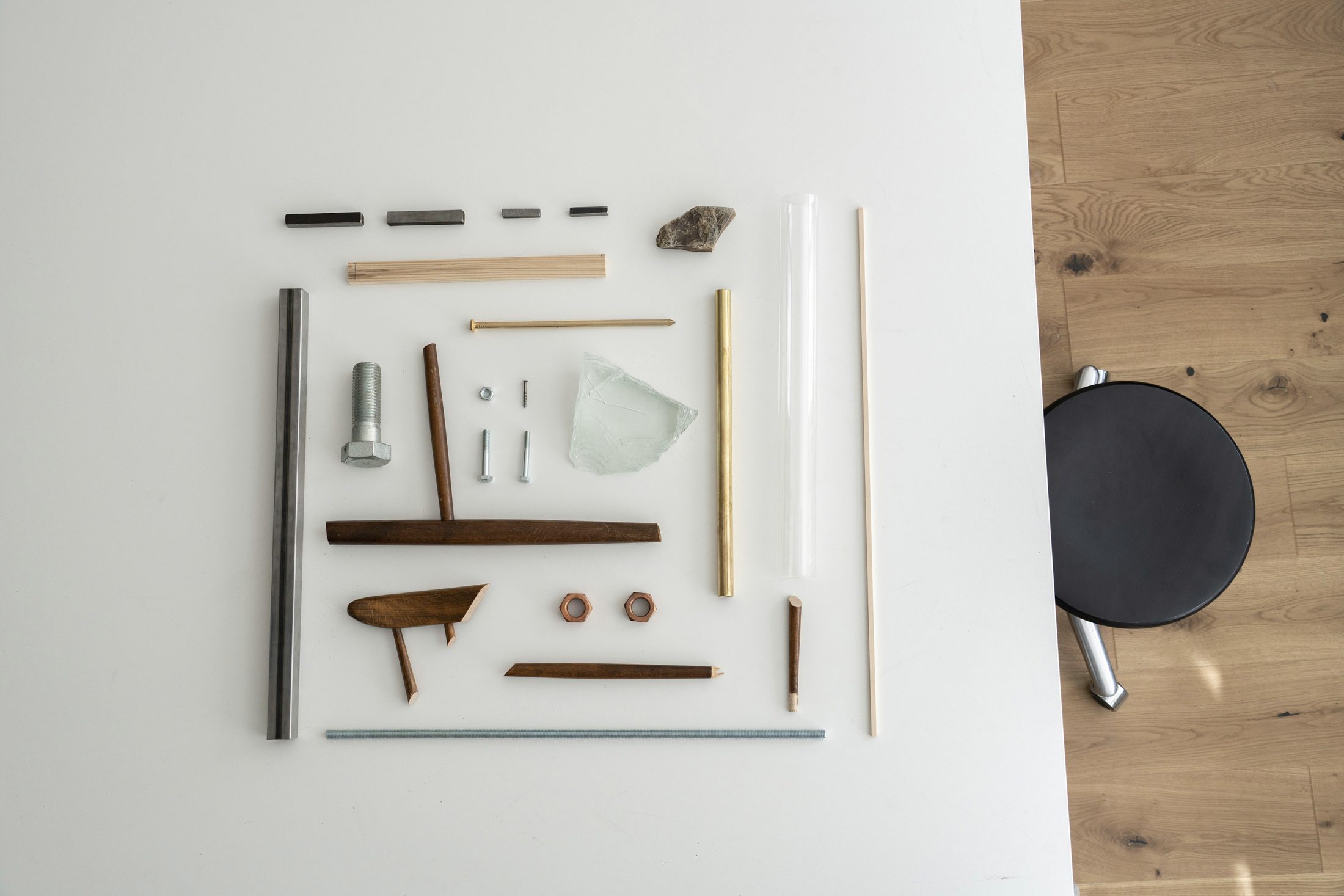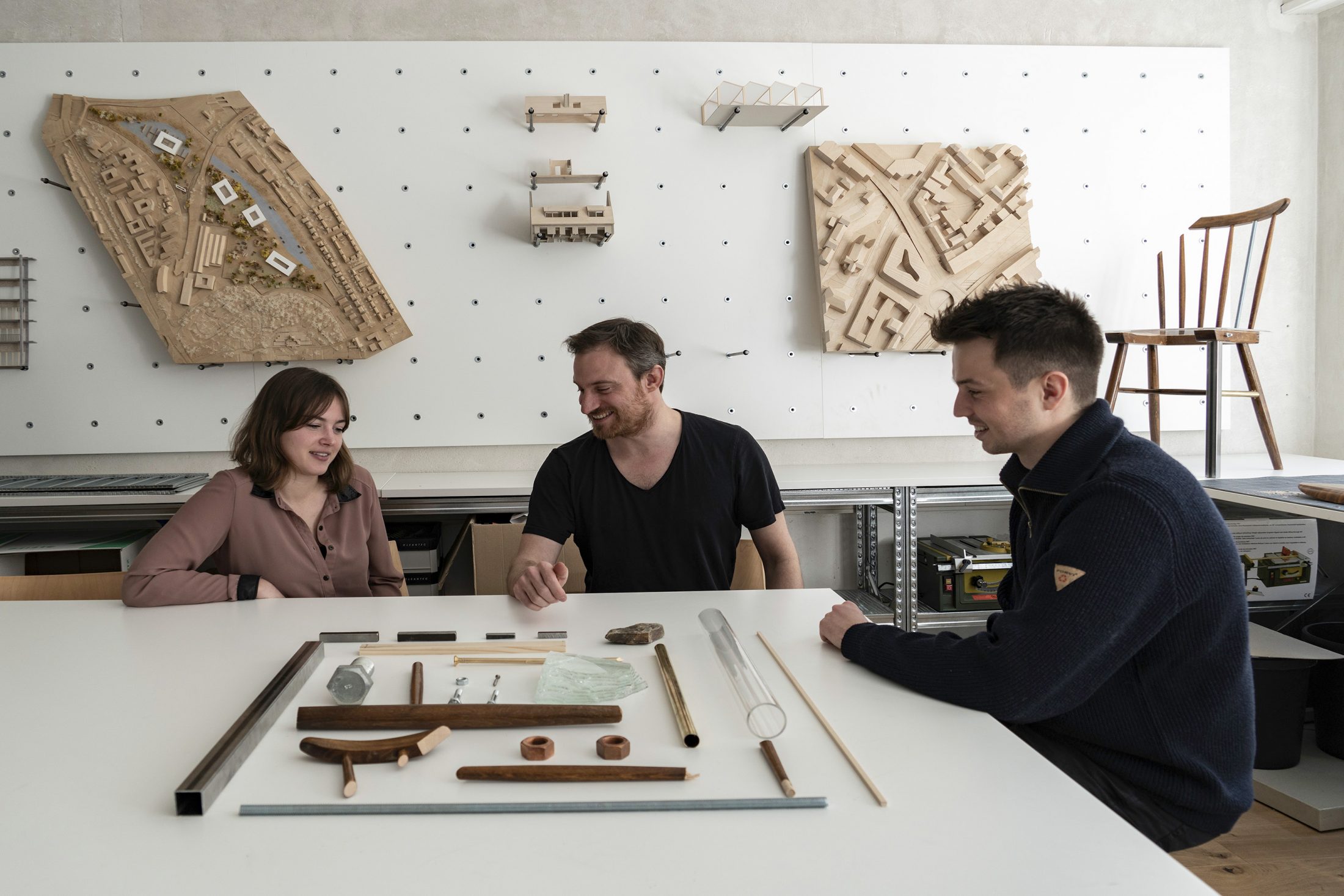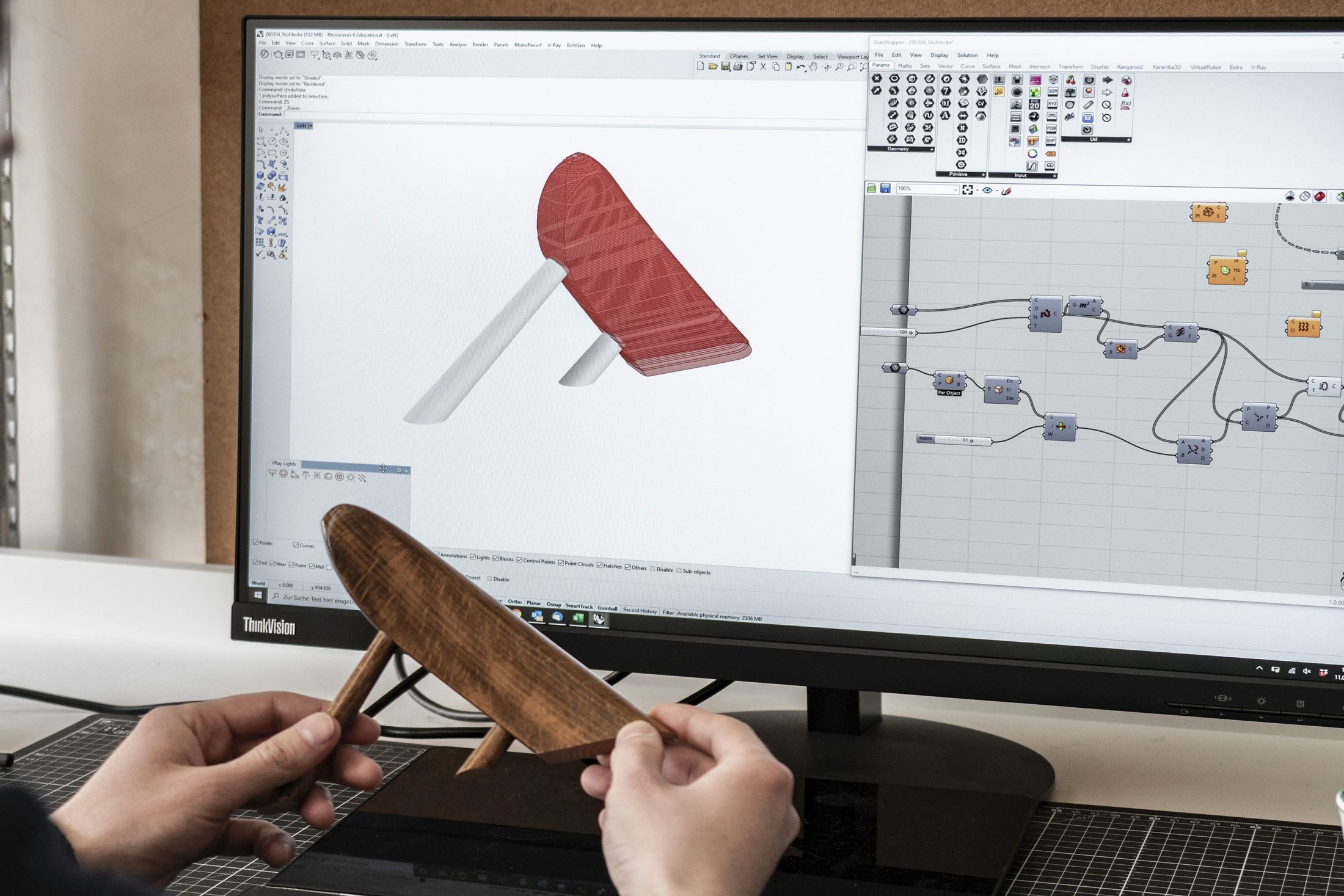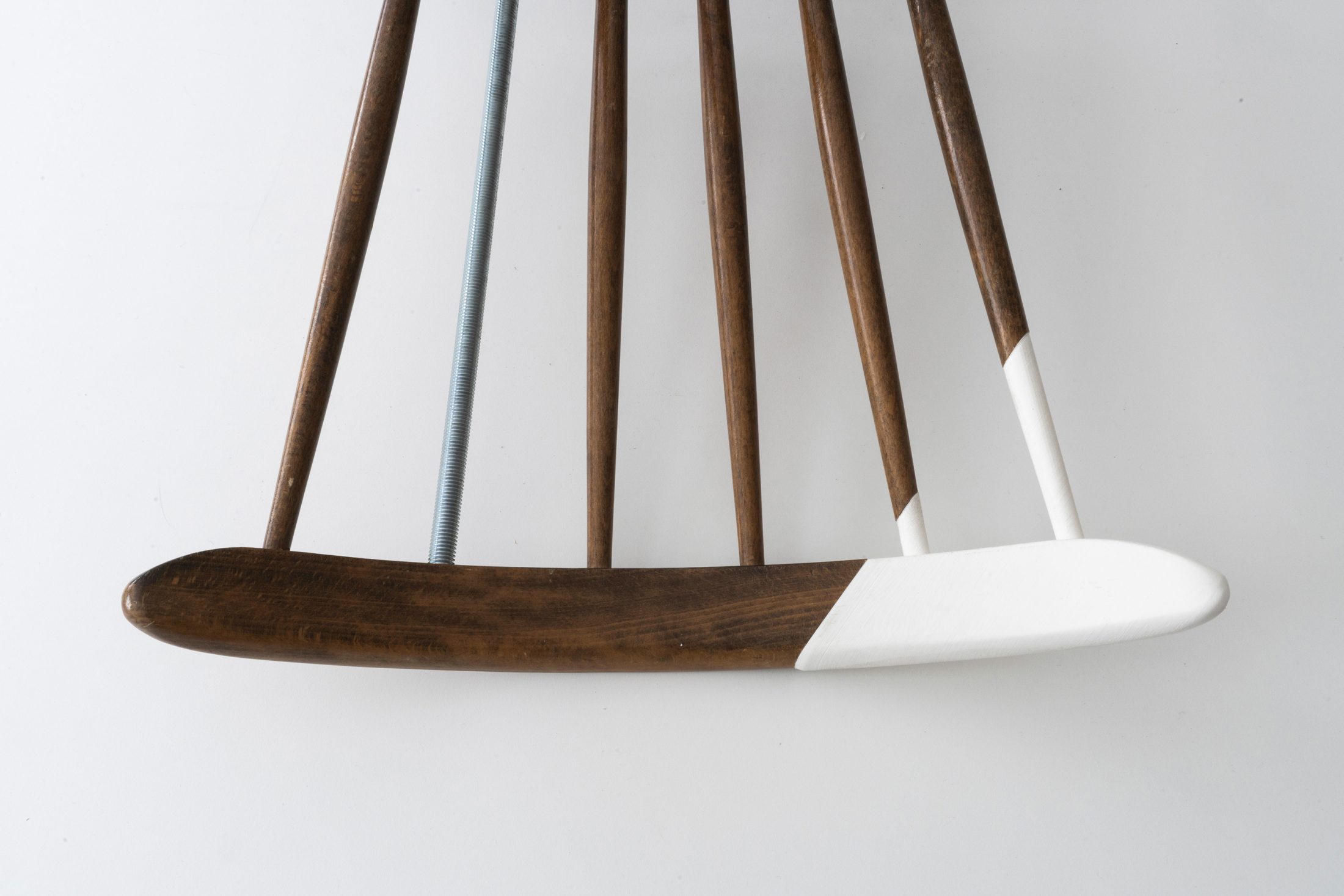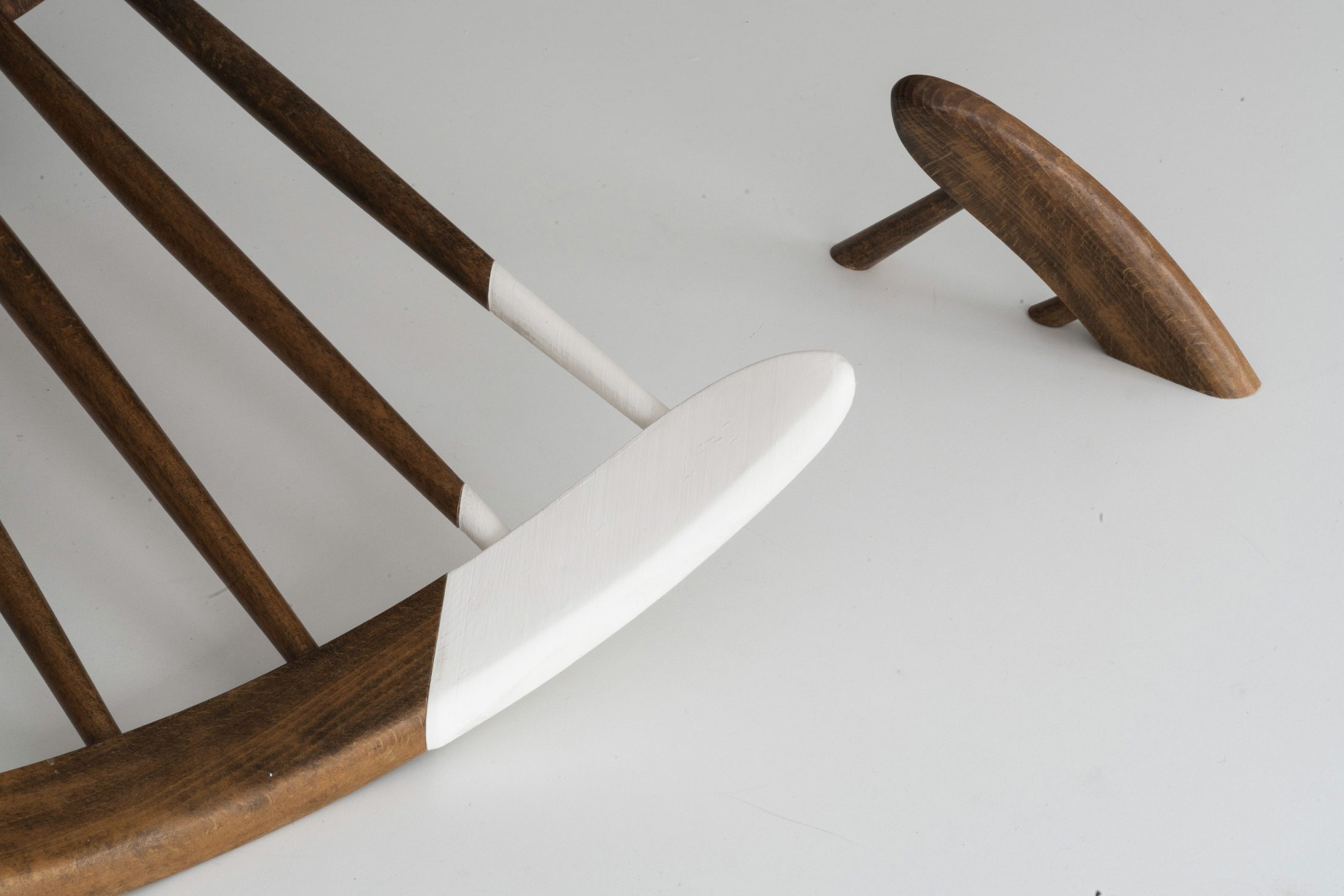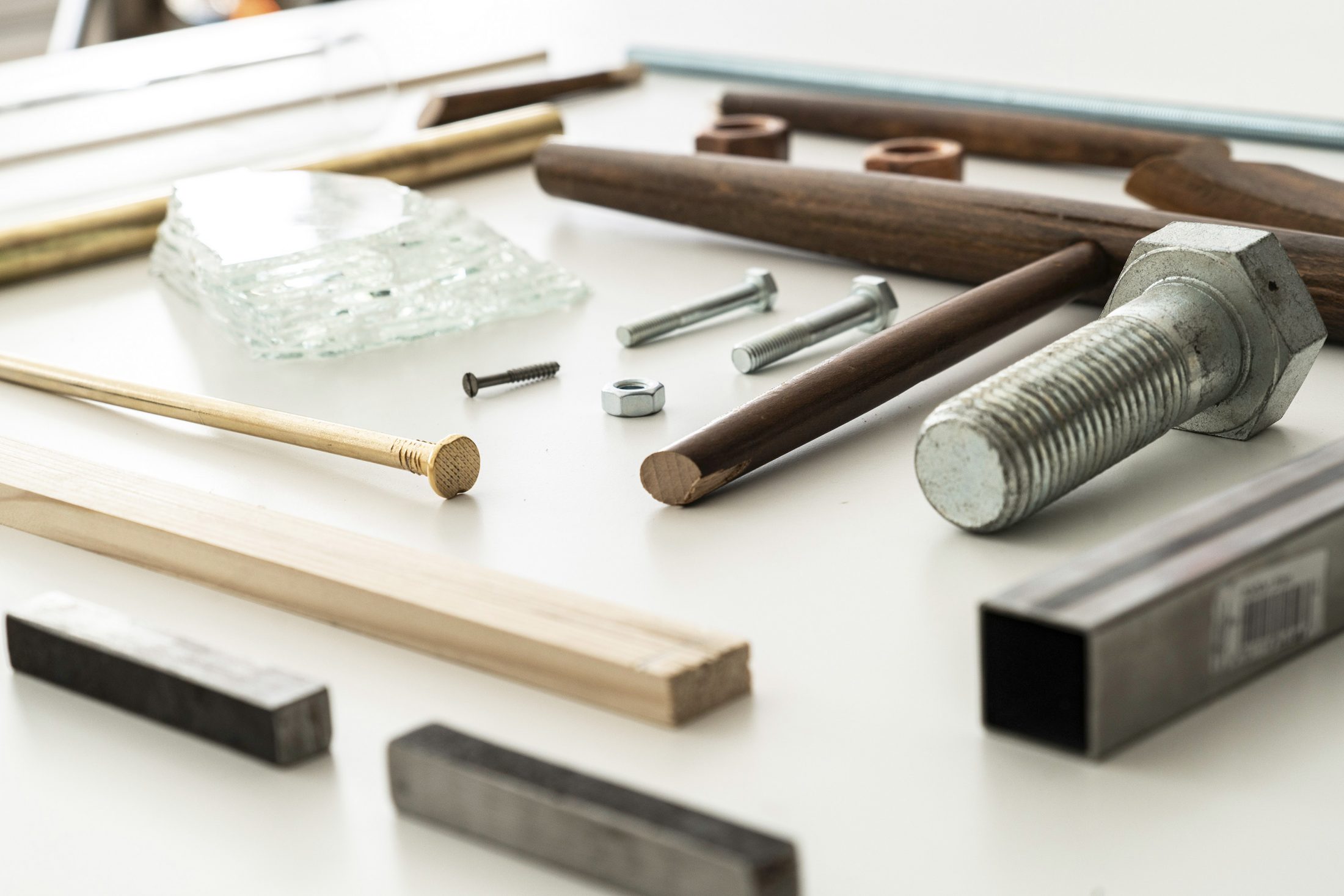This little experiment around an aged and in its appearance formalised wooden chair outlines where the protectable values of craft and architecture must be consulted. The tension that exists between the ´intangible´ creative knowledge performance and the ´tangible´ witness and memory of applied skills is relieved in form of an object.
The crafted object made in the sense of a ´one of a kind´, stands out from its former mass production appearance and is created in particular by the knowledge of processing with appropriate tools. It receives its cultural character through the selection and availability of raw materials and pre-produced elements, thus the human-nature relationship of the craftsman in a specific environment.
The conceptual approach of this chair project is closely based on the Japanese principle of Kintsugi. This is about the philosophical approach that damage is part of the history of an object and should therefore be seen as an increase in value. We also speak of the philosophy of wabi-sabi, an appreciation of the faulty or imperfect.
A higher quality addition of missing or damaged components is accomplished with contemporary materials and semi-finished products. All forms of manual intervention are permitted: whether classic tools, new materials or digital production processes.
Specifically, the chair was freed from damaged individual parts as a display object and prepared accordingly to illustrate the variance. The wooden chair leg was replaced by a square steel tube, wooden construction struts replaced by brass rods, a wooden strut on the backrest with a threaded iron rod. The worn seat was copied with a template and digitally lasered from plexiglass. A cropped corner of the backrest was 3D scanned, revised in the CAD program and printed again from PLA in 3D.
The joining of the semi-finished products receives special attention because it can hardly be carried out without manual skills and illustrates the complexity of the wabi-sabi and these „intangible“ aspects, the implementation of which is always based on local and practical knowledge of the available material resources.

